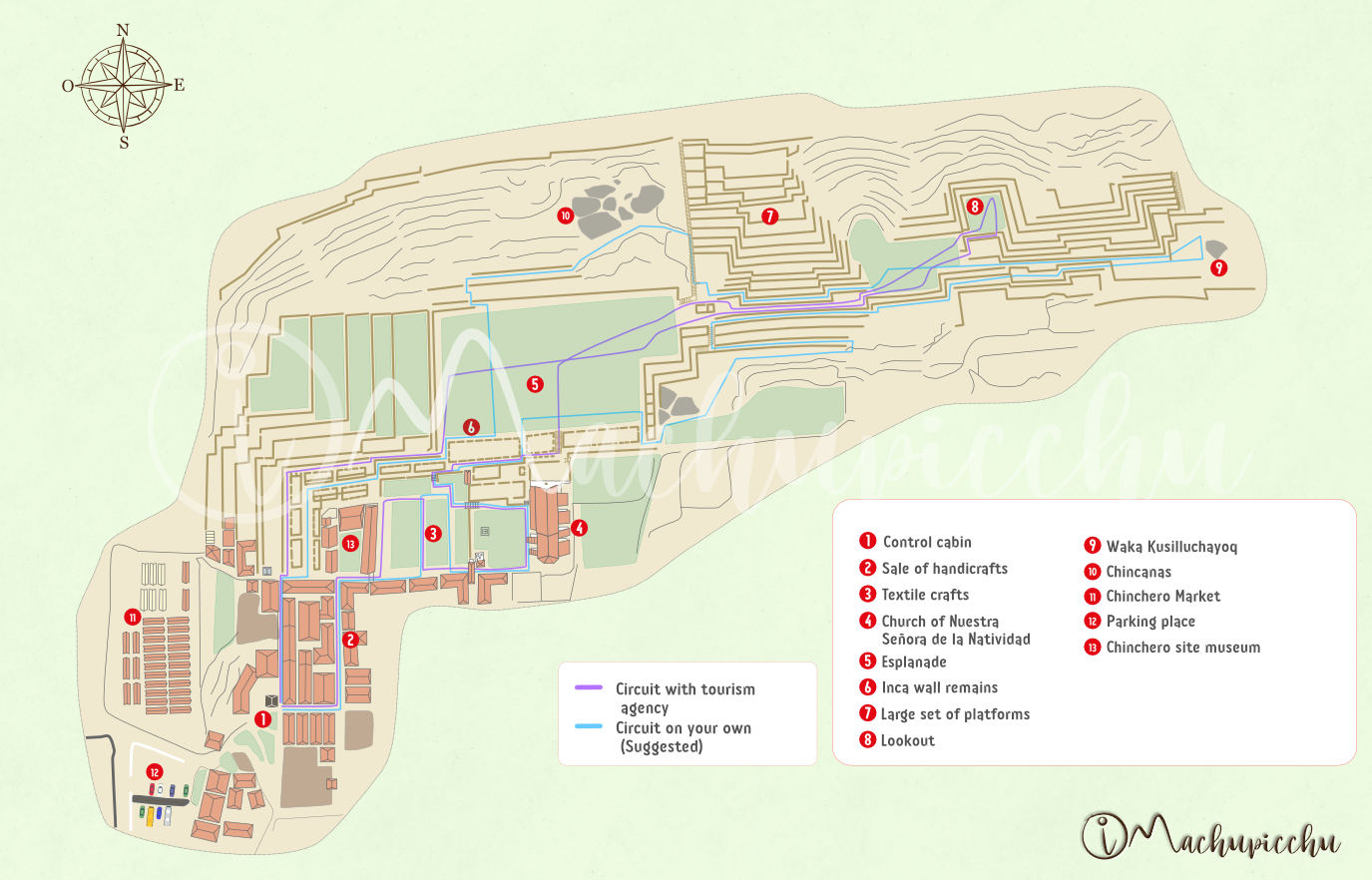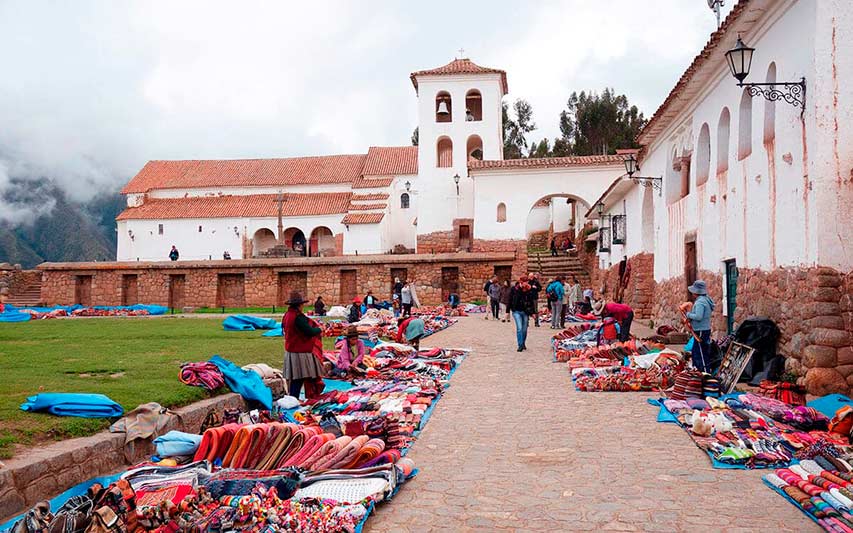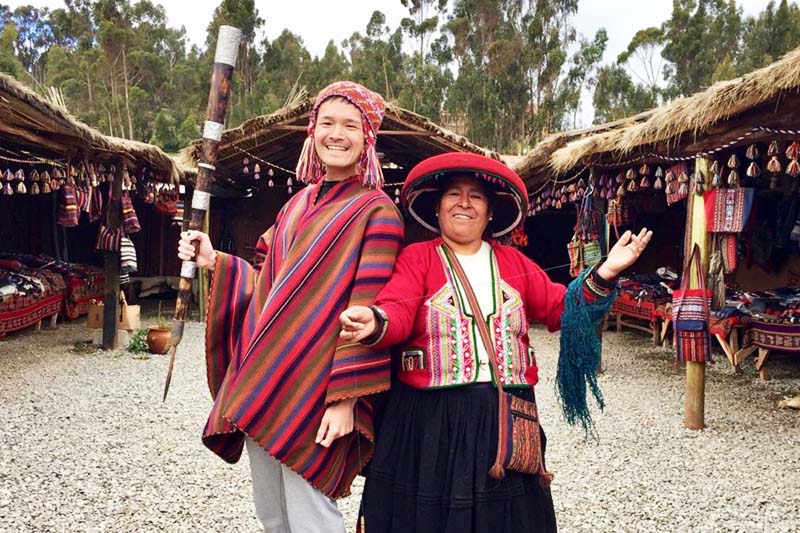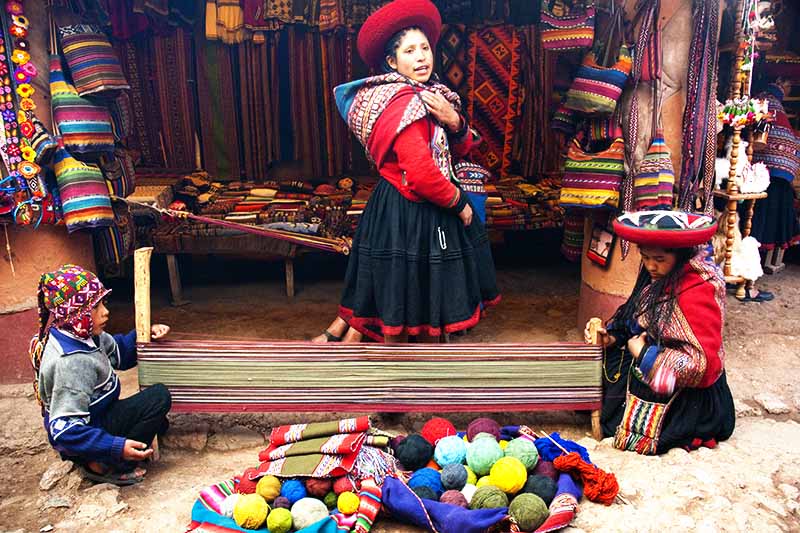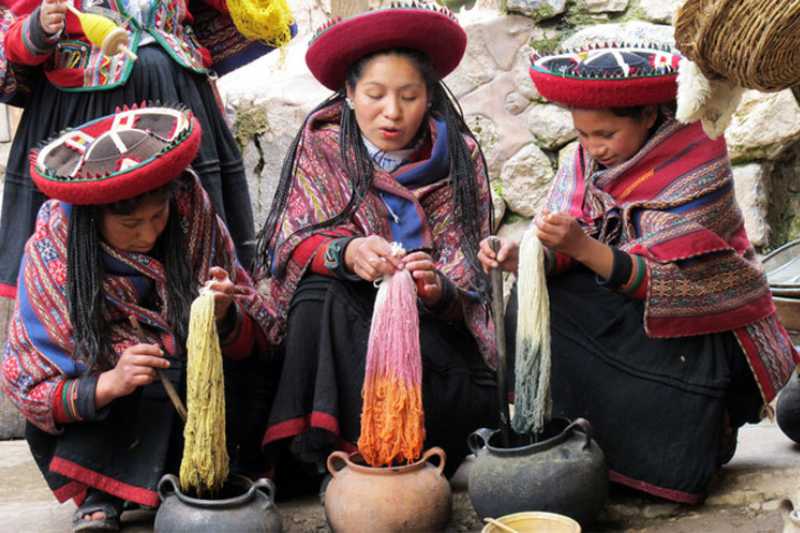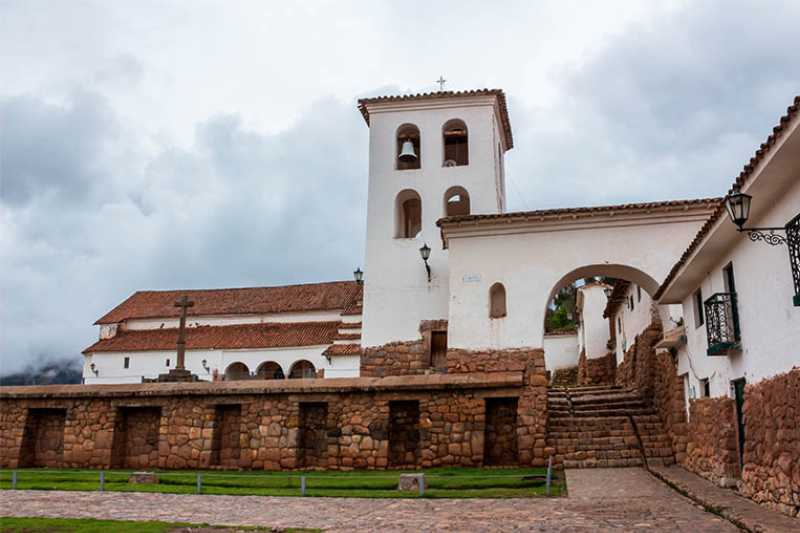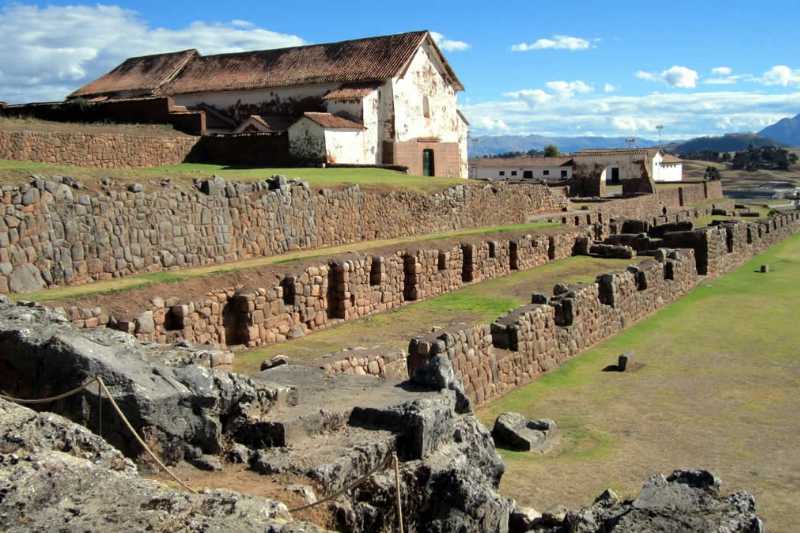Chinchero Archaeological Park
The Chinchero archaeological park is a little-known destination in the Sacred Valley of the Incas. However, the historical importance of the place makes this site one of the most important in the city of Cusco. Its platforms and stone constructions keep the traces left not only by the Incas but also by the cultures that preceded it. Learn about the secrets that the archaeological park of this traditional Peruvian town keeps.
- Where is it? How to get there?
- The traditional village of Chinchero
- The palace of Tupac Yupanqui
- The archaeological park of Chinchero
- How to visit this archaeological site?
- Opening hours
- Photos of the archaeological site
- What else to see in Chinchero?
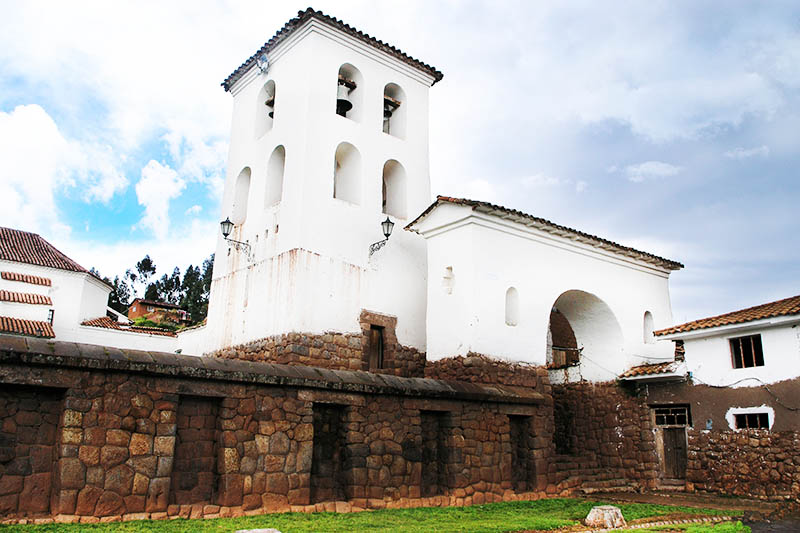
Chinchero Archaeological Park
Where is it? How to get there?
- This archaeological park is located in the town of Chinchero, in the area formed by the Sacred Valley of the Incas.
- To get there you must take ground transportation from the city of Cusco. The trip is 31 kilometers and takes 1 hour on average.
- On Belempampa street (1 kilometer from the main square in Cusco) cars depart for Chinchero. The cost of this trip is 4 soles per person (a little more than 1 dollar).
- If you travel with an all-inclusive tour, transportation and entrance to Chinchero are already included.
The traditional village of Chinchero
- Chinchero is a traditional town in Cusco. It is located at 3762 meters above sea level.
- It is known as the ‘Rainbow City’ because it is common to observe this natural phenomenon on rainy days. In the time of the Incas, it was an important center where the palace of residence of the Inca Túpac Yupanqui was located.
- In 1536, Manco Inca fled from the Spaniards towards Vilcabamba, setting fire to Chinchero as he passed so as not to leave them supplies for the persecution.
- Over the years, the customs took hold in the inhabitants of this place. Today some of its most important traditions are maintained.
- Currently, a large part of the population of Chinchero still wears the typical ancestral clothing and jealously guards many other traditions of their ancestors led by the ‘Varayoc’ or heads of families.
- There are up to 12 communities that are still organized under the Inca system called ‘ayllu’. On Sundays, there is a fair where you can still trade through barter or exchange.
- Chinchero is also famous for the textile centers where garments are still made in a traditional way.
Chinchero is one of the 7 districts that make up the Sacred Valley of the Incas. It is an obligatory route to get to Machu Picchu. It has many tourist attractions, however, the most outstanding thing is the traditions to this day are kept very alive in Chinchero.
The palace of Tupac Yupanqui
- It is estimated that in 1480, during the government of Túpac Yupanqui, a palace was built where the Inca lived with his family. This palace occupied the central part of the current archaeological site of Chinchero.
- Túpac Yupanqui was the son and successor of the first emperor, the Inca Pachacutec (who ordered the construction of Machu Picchu). It was in this palace that Túpac Yupanqui died in 1493 (probably poisoned by Chuqui Ocllo, one of his wives.
- Túpac Yupanqui palace was destroyed during the Spanish invasion in 1536. In addition, a large part of the town of Chinchero was burned down. Currently, of the splendid stone palace only its bases and a small set of niches and stone walls remain.
The archaeological park of Chinchero
- The Chinchero archaeological park is one of the main attractions of the town. It is an important agricultural area of up to 43 hectares developed during the Inca period and was previously inhabited by the Killke culture.
- It stands out for its stairs, Inca walls and beautiful platforms where camelids were grazed and the land was cultivated with various products. In it were found ceramic pieces, bone remains and stone works that are currently exhibited in the Site Museum.
- During Inca times, Chinchero enjoyed great importance due to its fertile land where potatoes were mainly grown. The famous Inca Túpac Yupanqui (1441 – 1493) built his palace there.
- With the arrival of the Spanish, Viceroy Toledo ordered the construction of the Church of Our Lady of Monserrat on the Inca’s palace. This as a measure of cultural submission.
- Today, this religious sanctuary has become a tourist attraction. It is characterized by presenting works made by the famous Cuzco painter Diego Quispe Tito. The atrium is finely made of gold leaf. There is the Virgin of the Nativity.
- Despite the research done to date, the Chinchero archaeological park still has treasures to be discovered. In January 2018, another set of enclosures and terraces were found buried several years ago during the construction of houses and the Site Museum of the place.
- It is estimated that part of the town of Chinchero was built on Inca remains.
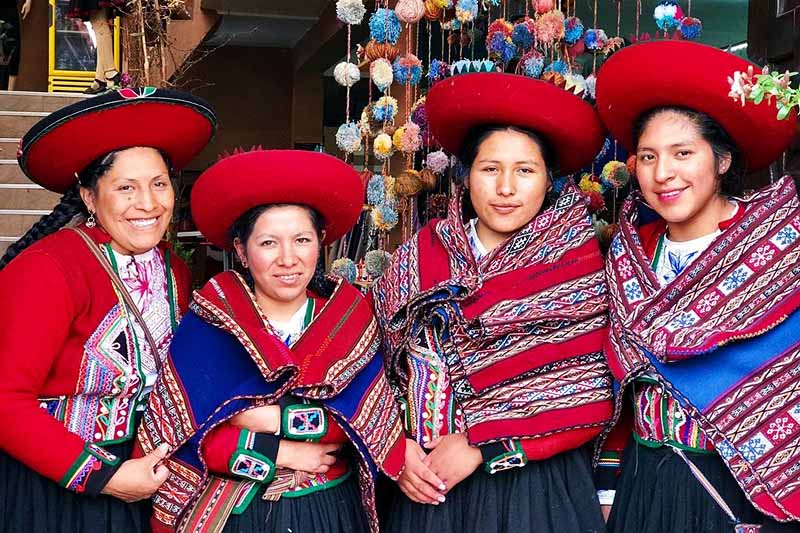
Chinchero settlers dressed in their typical clothes
How to visit this archaeological site?
- Most tourists visit the Chinchero archaeological site through a 1-day tour of the Sacred Valley of the Incas. This tour has a cost of between 50 to 80 dollars per person. In addition to Chinchero, you can visit Pisac, Urubamba and Ollantaytambo. Includes: complete transportation, entrance fees, lunch and tour guide.
- Some visitors prefer to visit the Chinchero archaeological site on their own (without a tour). For this you must buy the ‘Cusco Tourist Ticket Circuit 3’ which includes: Pisac, Ollantaytambo, Chinchero and Moray. It has a cost of 70 Peruvian soles (22 dollars, approximately). It can be purchased in the city of Cusco (Avenida el Sol 103 or Calle Garcilaso s / n.).
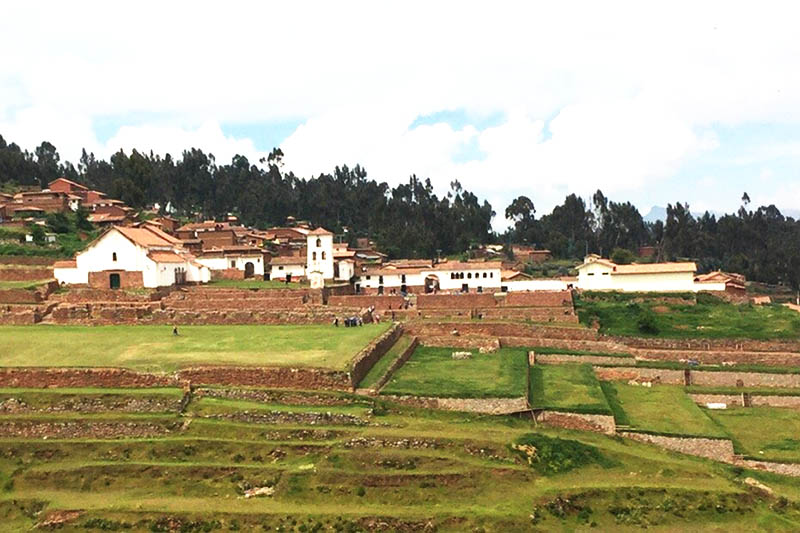
View of the Archaeological complex of Chinchero
Opening hours
- Monday to Sunday from 07:00 a.m. at 06:00 p.m.
What else to see in Chinchero?
The Chinchero archaeological park is not the only attraction to visit in this traditional town. There are also other ideal places and activities for tourism. Here are some of them.
- Chinchero Market – In the main square de Chinchero there is a market that on Sundays turns into a fair. This is characterized by preserving many of the traditions of the town. There you can still buy products under the barter or exchange system. In addition, objects made of llama wool, alpaca, native instruments of the place and characteristic edible products are sold.
- Chinchero Site Museum – It is located in the Main Square of Chinchero. This is the museum built to keep the pieces found during the excavations and put to the public of the Chinchero archaeological park. It consists of two environments. The first exhibits Inca pieces rescued from the area and the second traditional typical costumes of the place as well as paintings made by Diego Quispe Tito and other representatives of the Cusco school.
- Textile Centers – Chinchero is recognized worldwide for its textile centers that preserve the tradition of its ancestors. The vast majority of them work with alpaca wool. In addition to demonstrating how the garments are manufactured, the visitor has the opportunity to buy the product of their liking.
- Piuray Lagoon – Chinchero also offers adventure for the visitor. The Piuray lagoon, located just 3.5 kilometers from the town, offers practicing paddle tennis, a sport that consists of getting on a surfboard and rowing with a paddle. You can also do yoga sessions near the lagoon.
By Ticket Machu Picchu – Last updated, August 15, 2024
